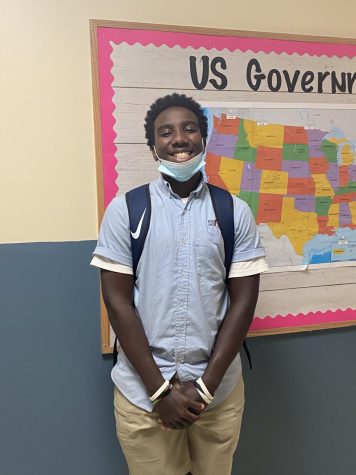Cultural Differences in the Halls
American schools have students from all over the world with unfamiliar cultures and religions. They all have different experiences.
October 11, 2022
American schools are known for having a highly diverse population. Student experiences differ from culture to religion to different school systems.

The process of getting used to the differences of school systems is unique from student to student. Many students find language acquisition to be the difficulty when adjusting to life in the United States.
“Mainly the language barrier when I first moved here, understanding where everything’s at, how everything is different here,” Freshman Jean Rodriguez said. “Also, the times and the hour difference is a lot more different than over there (Puerto Rico).”
Language is not the only change. For example, American schools are sometimes in different locations than other countries. One student who has experienced this is Senior Ryyan Mbabazi, who is from Uganda.

“It’s surrounded by buildings, mud houses, like with grass on top, like the roofing is grass, a lot of trees,” Mbabazi said. “It’s a rural place the ground is sand and dust.”
In most schools in the United States, there are many possibilities for students to participate in a wide range of activities, either during or after school. However, the opportunities in schools in other countries have the potential to be more limited.
“There’s just more opportunities in the U.S than there was back in Puerto Rico, sports, like I play American football, they don’t really got that in Puerto Rico, it’s just they got basketball, baseball, soccer, it’s not much variety,” Freshman Fernando Roldan Lopez said.
The hours that schools are open vary from one school to another. Typically, a school day lasts 7 to 8 hours. However, other nations, including Russia, have much longer school hours than we do.
“School over there started (Russia) at like around 7 something and then it ends like for me it was like a long day and then ended like at 7 pm,” Freshman Yasmina Malayeva said.
Changing schools, whether from one county to another or from one country to another, can have major influence when it comes to mental health. Even if students stay in one place, cultural differences like customs and religion set some students apart from others.

“Most of the time I don’t care but sometimes I feel judged,” Freshman Alexandrea Ortiz said. “It’s kinda different because I’m not really from a school like this, it’s like a lot of different types of people.”
Judgement can be one of the most difficult aspects of adapting to the U.S. Many teens from other countries struggle at first when they come to America, including Malayeva.
 “It was very hard. Like, I didn’t know what to say and I was like a loner at first,” Malayeya said.
“It was very hard. Like, I didn’t know what to say and I was like a loner at first,” Malayeya said.
Students from all around the world are welcome at American schools. Many with different cultures and beliefs. Most of them at first have trouble, but they eventually adjust to living in a new environment.
“To be honest, I don’t have a least favorite. Like, I love everything,” Malayeya said.



